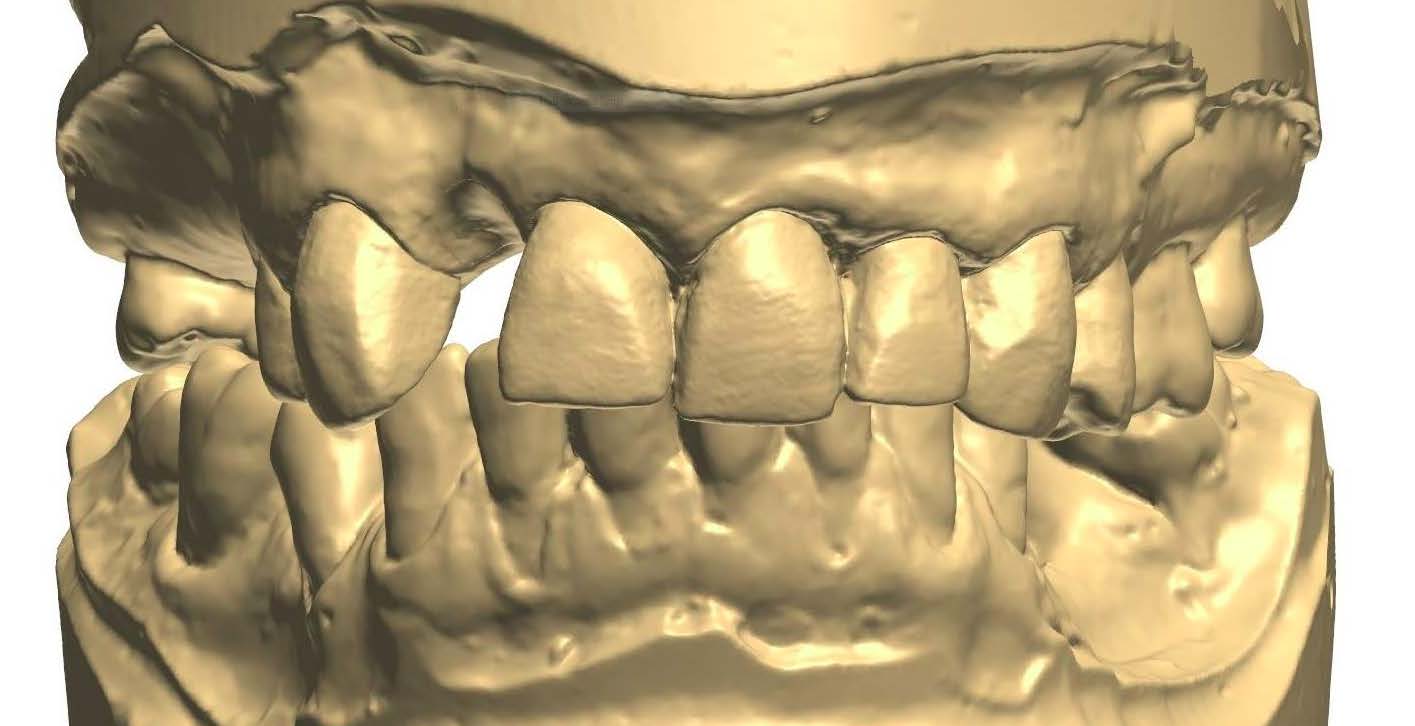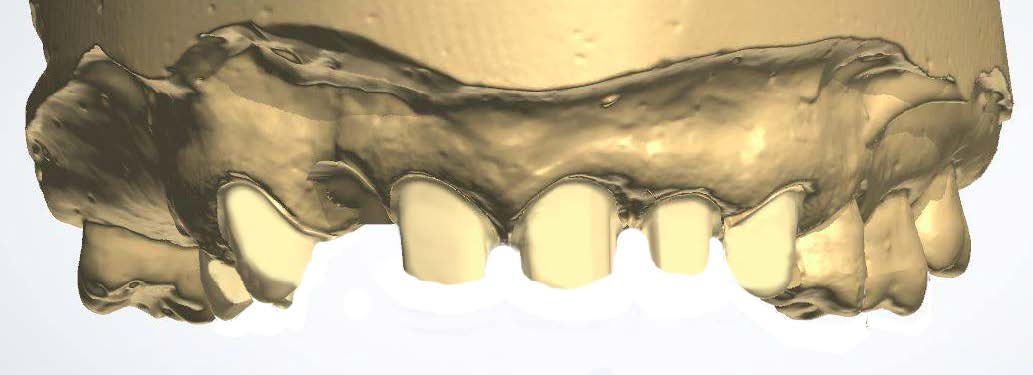Provisional diagnostic restorations
Patients who are candidates for extensive anterior restorations have expectations, and justifiably so. Not only do they have expectations about the esthetic results, but also about how well the prosthesis will work and whether it will affect their speech. It’s sometimes difficult to fully grasp the patient’s preconceived notion of what nice teeth should look like. Depending on the person’s face and personality, their idea might not be the same as yours. The desire to achieve a certain look sometimes overtakes rational thought, which is why clear communication between the patient and the dental team is so important to a satisfactory outcome. In this case, we recommend using provisional crowns or bridges as prototypes before making the final fixed prosthesis.

Preoperative condition of the mouth:
There are several advantages to this type of strategy. A provisional acrylic prosthesis, which the patient wears in his day-to-day life with family and friends, will give the dental team a better idea of the patient’s expectations. Adjustments and/or additions can be made until the person is satisfied with the results. The important thing here is to always be able to reproduce the shape of the provisional prostheses that were tested in the patient’s mouth. The prepared teeth also need to be reduced sufficiently so that the restorations are thick enough to ensure they are solid and esthetically appealing. At the same time, the bridge needs to be designed such that it avoids significant tooth reduction, which could go against clinical principles.

Virtual tooth reduction
Of course, provisional prostheses can be made using the traditional method, in which stone models are made of the prepared teeth and the bridge is made on the same model. Incidentally, with the widespread use of digital techniques these days, we’ll soon have to use the term “traditional” to refer to that technology and reserve the term “artisanal” for manual fabrication methods. CAD/CAM has certain advantages, such as the ability to evaluate several morphological versions of the prosthesis before making the final version. Since the bridge is designed using CAD software, it’s easy to send images of the provisional model to the practitioner for discussion purposes.

Provisional prosthesis
Once the patient has approved the provisional prosthesis, the final bridge can be made using the provisional design stored in the system memory, unlesschanges were made to the bridge when it was tested in the patient’s mouth. The dentist can of course work on the provisional form and make changes to the prosthesis. Acrylic can also be added until the patient is fully satisfied, or to adjust for eccentric occlusal contacts. When changes have been made chairside, we recommend taking another impression of the bridge in the mouth; the resulting model will be digitized and reproduced to make the permanent prosthesis.
The procedures described here imply the use of traditional impression materials, but the same result could easily be obtained with a direct digital scan of the teeth and other tissues. In this case, we could even avoid producing models, which must be made using a 3D printer.





